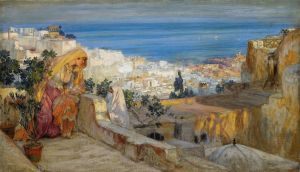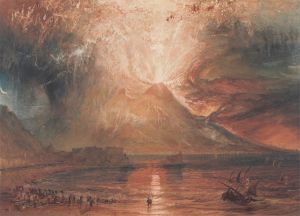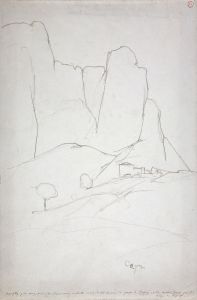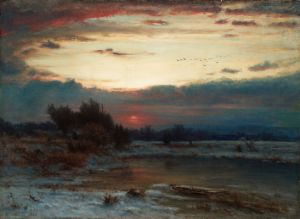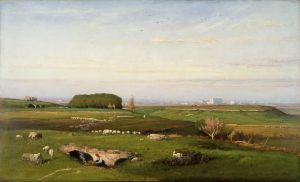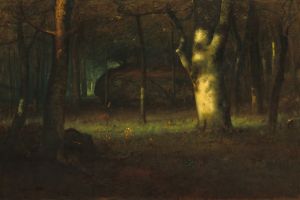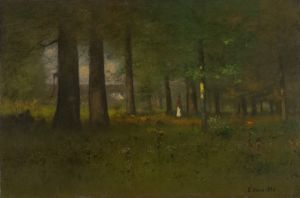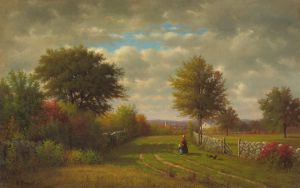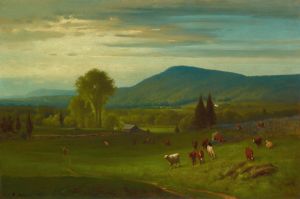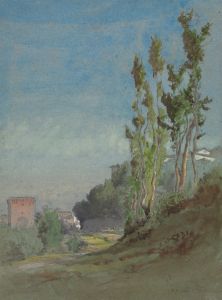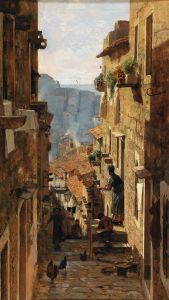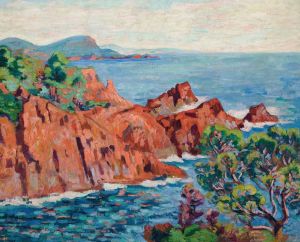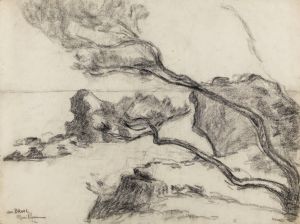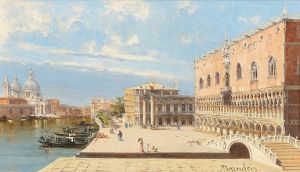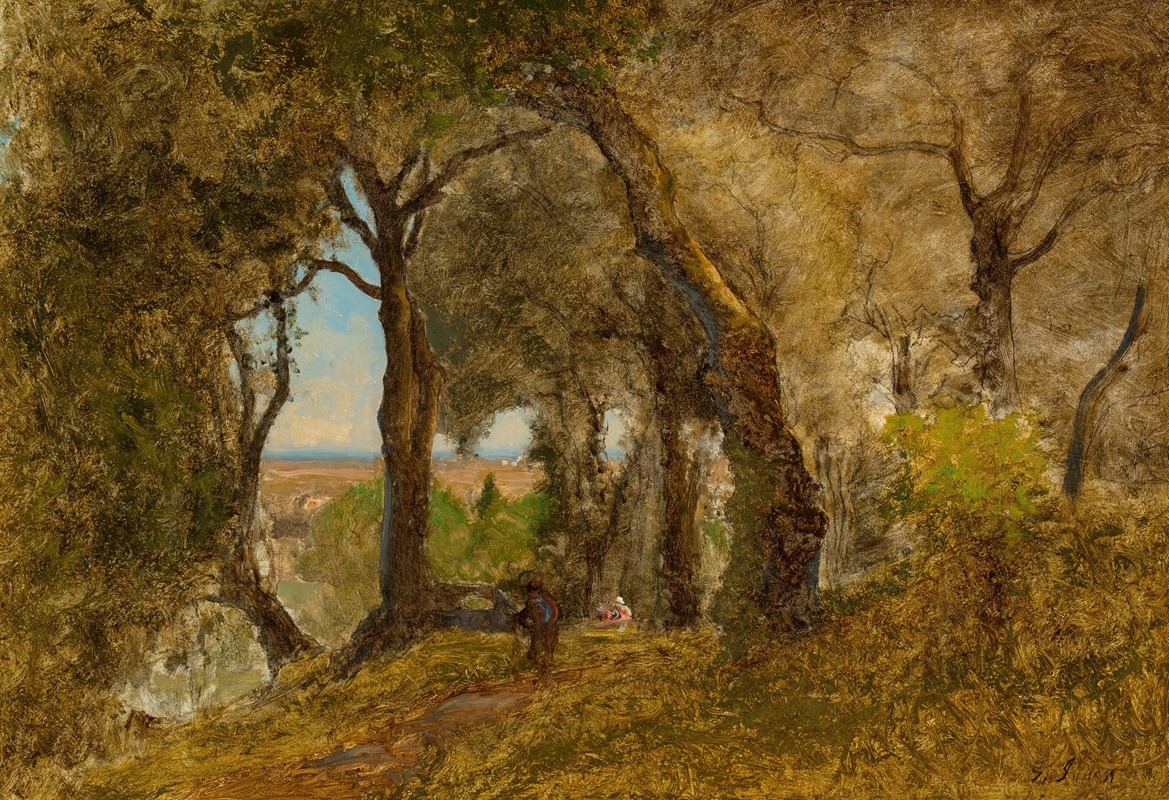
Olives, Albano, Italy
A hand-painted replica of George Inness’s masterpiece Olives, Albano, Italy, meticulously crafted by professional artists to capture the true essence of the original. Each piece is created with museum-quality canvas and rare mineral pigments, carefully painted by experienced artists with delicate brushstrokes and rich, layered colors to perfectly recreate the texture of the original artwork. Unlike machine-printed reproductions, this hand-painted version brings the painting to life, infused with the artist’s emotions and skill in every stroke. Whether for personal collection or home decoration, it instantly elevates the artistic atmosphere of any space.
"Olives, Albano, Italy" is a painting by the American artist George Inness, who is widely regarded as one of the most influential American landscape painters of the 19th century. Inness was born on May 1, 1825, in Newburgh, New York, and he became known for his ability to blend the naturalistic detail of the Hudson River School with a more expressive, atmospheric approach influenced by the Barbizon School of France.
The painting "Olives, Albano, Italy" was created during Inness's travels in Europe. Inness traveled to Italy in the early 1870s, a period that significantly influenced his artistic development. This painting captures the serene landscape of Albano, a town located in the Lazio region of Italy, near Rome. The town of Albano is known for its picturesque scenery, including olive groves, which are a prominent feature in this work.
In "Olives, Albano, Italy," Inness employs a soft, diffused light that bathes the landscape in a warm glow, creating a tranquil and harmonious scene. The composition is characterized by its balanced arrangement of natural elements, with olive trees prominently featured in the foreground and middle ground. The use of light and shadow in the painting demonstrates Inness's mastery of atmospheric effects, a hallmark of his mature style.
Inness's technique in this painting reflects his interest in capturing the spiritual essence of the landscape, rather than merely its physical appearance. He believed that art should convey a sense of the divine presence in nature, a philosophy that was influenced by his study of the Swedish scientist and philosopher Emanuel Swedenborg. This spiritual dimension is evident in the way Inness renders the olive trees and the surrounding landscape with a sense of reverence and tranquility.
The painting is also notable for its use of color. Inness employs a palette of earthy tones, with greens, browns, and ochres dominating the scene. These colors not only depict the natural environment accurately but also enhance the overall mood of the painting, evoking a sense of peace and contemplation.
"Olives, Albano, Italy" is an excellent example of Inness's ability to blend realism with a more subjective, emotional approach to landscape painting. It reflects his deep appreciation for the beauty of the natural world and his belief in the interconnectedness of all living things. The painting is part of the collection of the Museum of Fine Arts, Boston, where it continues to be appreciated by art enthusiasts and scholars alike.
George Inness's work, including "Olives, Albano, Italy," has had a lasting impact on American art. His innovative approach to landscape painting paved the way for future generations of artists, and his emphasis on the spiritual and emotional aspects of nature remains influential to this day.





